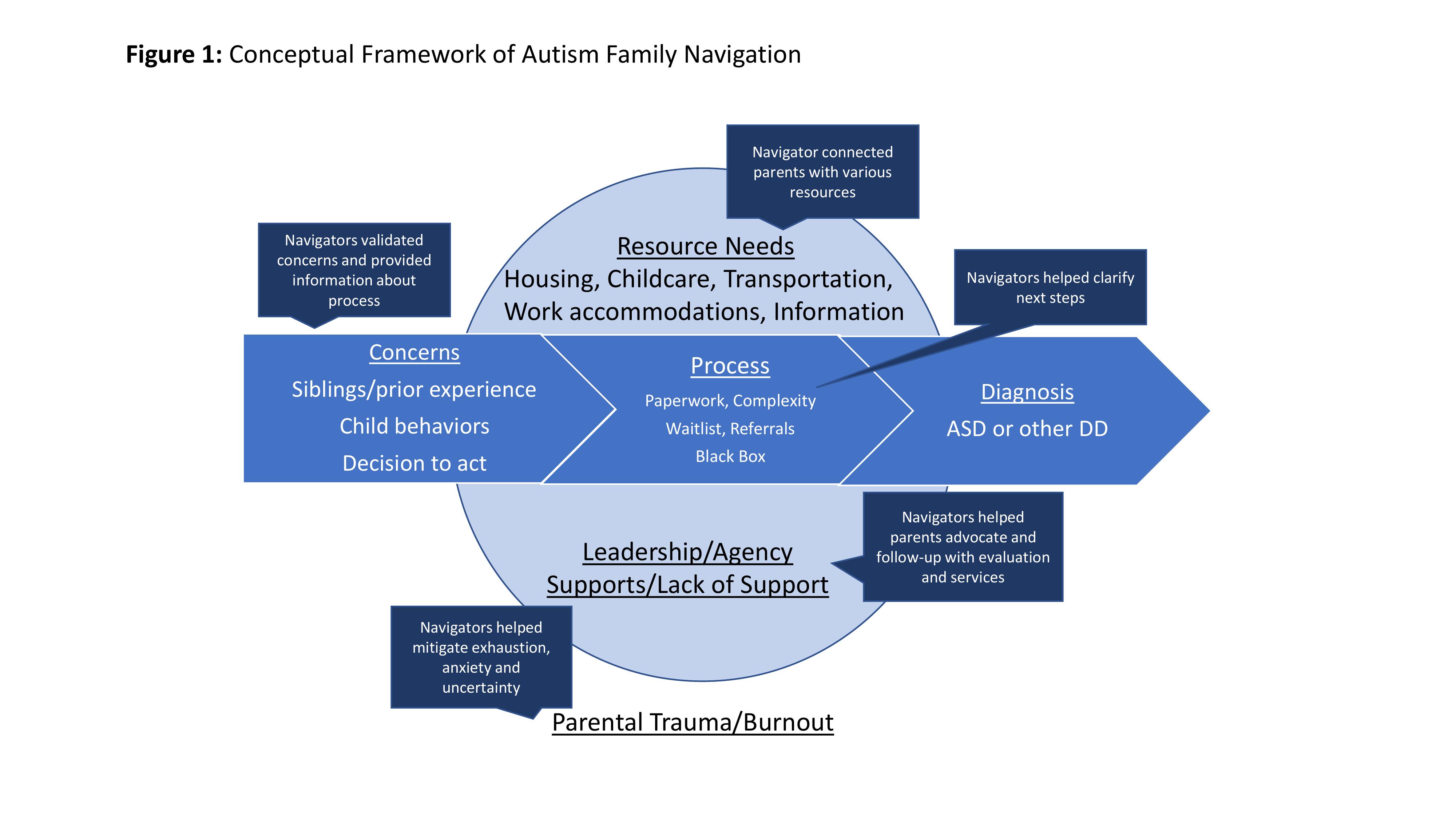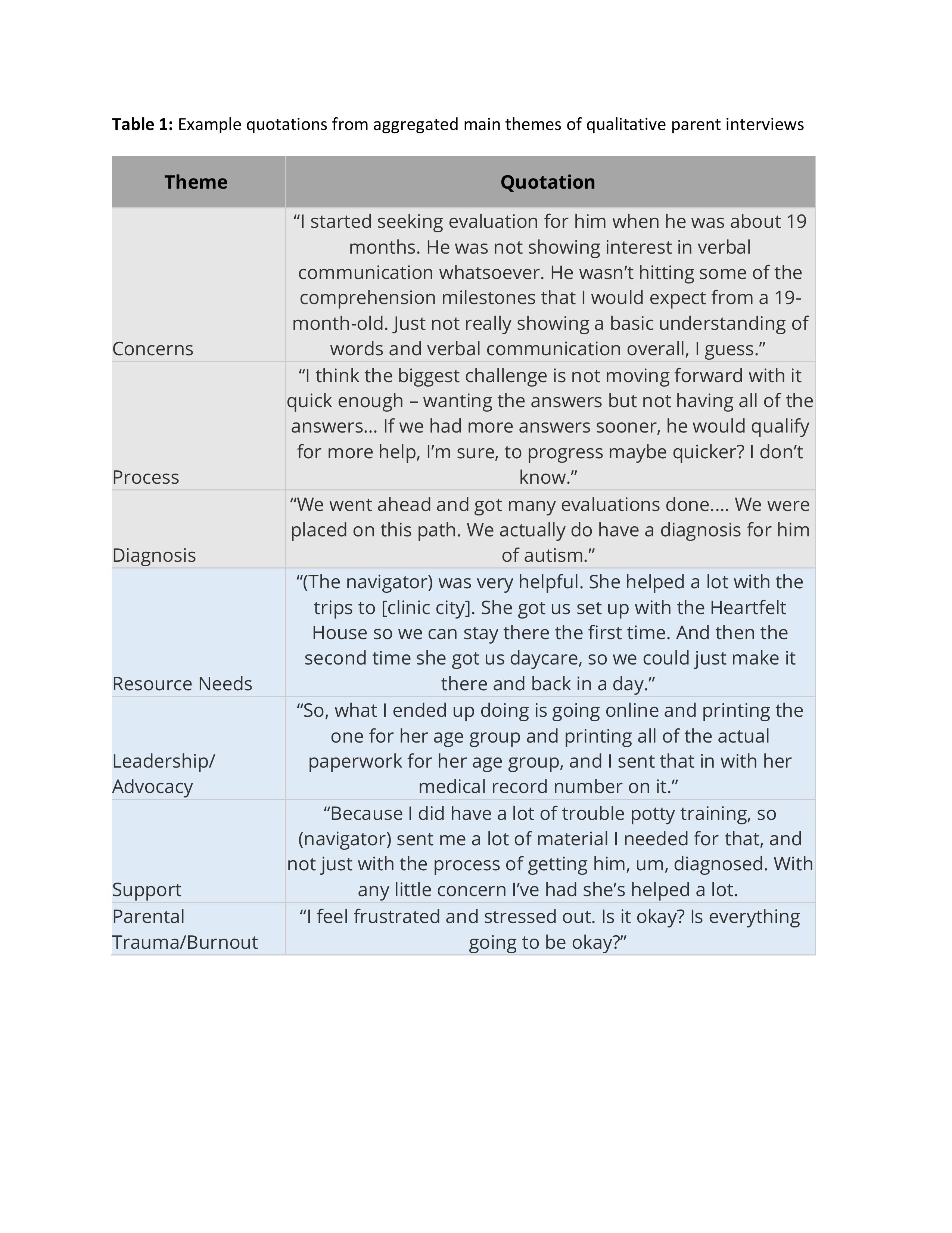Developmental and Behavioral Pediatrics: Autism
Developmental and Behavioral Pediatrics 2
564 - A Qualitative Exploration of Family Navigation in Access to Autism Care
Friday, April 28, 2023
5:15 PM - 7:15 PM ET
Poster Number: 564
Publication Number: 564.109
Publication Number: 564.109
Avneet Sidhu, Oregon Health & Science University School of Medicine, Portland, OR, United States; Mohadeseh Solgi, OHSU, Portland, OR, United States; Katharine E. Zuckerman, Doernbecher Children's Hospital at Oregon Health & Science University, Portland, OR, United States
- AS
Avneet Sidhu (she/her/hers)
Trainee
Oregon Health & Science University School of Medicine
Portland, Oregon, United States
Presenting Author(s)
Background: The process of autism evaluation can last between several months to years for children with elevated risk on initial primary care screening. Family navigation holds promise for reducing stressors and accelerating early autism diagnosis; however, little is known about how navigation impacts families’ experiences of access to autism care.
Objective: To qualitatively understand how telehealth navigation impacts families’ autism diagnostic experiences.
Design/Methods: We conducted qualitative interviews with families who participated in Autism ALERT, a site-randomized trial of telehealth family navigation for children identified with autism risk. In the Autism ALERT intervention, families with positive screens and/or provider autism concerns seen in 4 primary care clinics received telehealth family navigation by Oregon Help Me Grow resource specialists. Navigators provided information about autism, social support, and assisted with paperwork and appointments. Families in 3 control-arm clinics received usual care. 6 months after study enrollment, families were offered English or Spanish qualitative interviews. In interviews, parents were asked about access to care, perceived barriers, and (in intervention arm) experience with navigators. Interviews lasted 30 minutes, were digitally recorded, and were transcribed. An initial coding framework was created after reviewing transcripts with team members including an autistic adult. Subsequently, transcripts were coded in Dedoose by 2 team members using a phenomenological approach; coding disagreements were resolved by consensus. Codes were aggregated into major themes, with example quotations (Table 1).
Results: 12 families were interviewed: 11 in English and 1 in Spanish; 6 were from intervention and 6 from control arm. Parents framed their autism experiences in terms of initial concerns, diagnostic process, and diagnostic results. Child’s behaviors and siblings often led parents to act on initial concerns and receive evaluation. During the process, parents reported paperwork complexity, long waitlists, and lack of transparency (“black box”). The process was affected by parental resource needs (e.g., housing, child care), leadership, and supports (e.g., family, providers). Lack of support and resources led to parental trauma/burnout (Table 1). Navigators improved support and mitigated barriers at multiple steps of the process (Figure 1).
Conclusion(s): The autism diagnostic process is complex. Family navigation may reduce challenges by validating parental concerns, connecting parents with resources, clarifying the diagnostic process, and advocating for children.


